Come join us now, and enjoy playing your beloved music and browse through great scores of every level and styles!
Can’t find the songbook you’re looking for? Please, email us at: sheetmusiclibrarypdf@gmail.com We’d like to help you!
Table of Contents
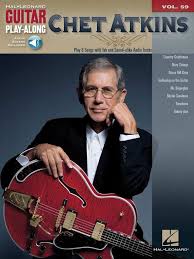
Best Sheet Music download from our Library.
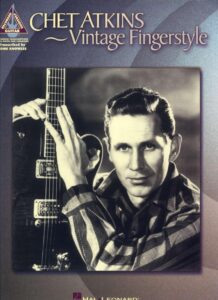
Please, subscribe to our Library.
If you are already a subscriber, please, check our NEW SCORES’ page every month for new sheet music. THANK YOU!
Chet Atkins: The Quiet Revolutionary Who Shaped the Sound of Guitar
Chet Atkins wasn’t just a guitarist; he was a sonic architect, a record producer who defined an era, and a musical ambassador whose influence transcended genre borders. Known affectionately as “Mr. Guitar” and “The Country Gentleman,” Atkins possessed a unique blend of technical mastery, profound musicality, and quiet humility that made him one of the most revered figures in 20th-century music. His legacy is woven into the fabric of country, jazz, pop, rock, and countless instrumental guitar traditions worldwide.
Browse in the Library:
Or browse in the categories menus & download the Library Catalog PDF:
Biography: From Appalachian Hardship to Nashville Royalty
- Humble Beginnings (1924-1942): Chester Burton Atkins was born on June 20, 1924, in Luttrell, Tennessee, deep in the heart of the Appalachian Mountains. Life was marked by poverty and hardship. His parents divorced when he was six, and he and his brothers lived with their father, a struggling music teacher and singer. Plagued by severe asthma and often feeling like an outsider, young Chet found solace in music. His first instrument was a ukulele, followed by a fiddle, but his destiny changed irrevocably when his older brother Lowell returned from the service with a guitar. Hearing Merle Travis’s revolutionary fingerpicking style on the radio became a revelation. Chet, largely self-taught, obsessively practiced, developing his own sophisticated variation on Travis’s thumb-and-fingers technique (“Travis picking”).
- The Road Years & Early Radio (1942-1950): Atkins’ asthma kept him out of WWII service. Instead, he hit the road, a lanky teenager seeking gigs wherever he could find them. He landed his first professional job at WNOX radio in Knoxville in 1942. This began a nomadic period playing on various radio stations (WCKY Cincinnati, KWTO Springfield, Missouri) and backing artists like the Carter Family and Bill Carlisle. His unique playing quickly garnered attention, but financial security remained elusive. A pivotal moment came in 1946 when he met his idol, Merle Travis, backstage. Atkins played for him, and Travis, impressed, gave him invaluable encouragement and advice.
- RCA Victor & The Nashville Move (1950-1957): In 1947, Steve Sholes, head of RCA Victor’s country division, heard Atkins’ distinctive playing on a Red Foley recording. Sholes became a champion, bringing Chet to New York for session work and eventually signing him as a solo artist in 1947. While his early solo records didn’t set charts alight, his reputation as a session guitarist grew exponentially. In 1950, Sholes sent Atkins to Nashville to supervise RCA’s recording sessions there. This move proved historic. Atkins became the cornerstone of Nashville’s burgeoning studio scene, playing on countless hits for artists like Hank Williams, Elvis Presley (early sessions), The Everly Brothers, Don Gibson, and Roy Orbison. His ability to play anything flawlessly, often on the first take, made him indispensable.
- Architect of the Nashville Sound & Superstardom (1957-1970s): By the late 1950s, country music was facing stiff competition from rock ‘n’ roll. Atkins, alongside producer Owen Bradley, was tasked with revitalizing the genre. As head of RCA’s Nashville operations (officially from 1957), Atkins pioneered the “Nashville Sound.” This sophisticated style smoothed country’s rougher edges by incorporating lush string arrangements, background vocal choirs (The Anita Kerr Singers, The Jordanaires), and a more prominent, melodic bass line, often played by Bob Moore. Crucially, it reduced the prominence of fiddles and steel guitar, replacing them with Atkins’ own elegant guitar fills and solos. This commercially successful formula made stars of Jim Reeves, Don Gibson, Skeeter Davis, and countless others. Simultaneously, Atkins’ own instrumental recordings soared in popularity. Albums like “Chet Atkins in Three Dimensions” (1955), “Finger Style Guitar” (1956), and especially “Chet Atkins at Home” (1957) showcased his virtuosity and musical breadth, appealing to jazz and pop audiences. His collaborations with artists like Hank Snow (“The Gallopin’ Guitar”) and Arthur Fiedler/The Boston Pops cemented his mainstream appeal.
- Global Ambassador & Later Career (1980s-2001): Atkins remained a prolific recording artist and performer throughout the 1980s and 1990s, though his influence as a producer waned as country music evolved. He embraced new generations, collaborating with rock and contemporary artists like Mark Knopfler (the Grammy-winning “Neck and Neck” album in 1990), George Harrison, Eric Johnson, Tommy Emmanuel, and Suzy Bogguss. He became a global ambassador for the guitar, revered in jazz circles and by fingerstyle players worldwide. His signature Gretsch “Country Gentleman” guitar became iconic. He continued to record and tour until shortly before his death from colon cancer on June 30, 2001, in Nashville.
Music Style: The Art of Sophisticated Simplicity
Atkins’ style was a seamless, sophisticated blend:
- Country Roots: The bedrock was the thumb-driven alternating bass pattern derived from Merle Travis, providing rhythmic drive and harmonic foundation.
- Jazz Sophistication: He incorporated complex jazz chords (extensions like 7ths, 9ths, 11ths, 13ths, altered dominants), sophisticated harmonies, walking bass lines, and bebop-inspired melodic lines. He had a deep love for Django Reinhardt and George Barnes.
- Classical Nuance: His tone was exceptionally clean, articulate, and warm. He employed classical techniques like harmonics (both natural and artificial), counterpoint (independent melodic lines), and a refined sense of dynamics and phrasing. Pieces like “Recuerdos de la Alhambra” showcased his classical aspirations.
- Pop Melodic Sensibility: Atkins had an unerring ear for a beautiful melody. His arrangements of pop standards (“Mr. Sandman,” “Tara’s Theme,” “Let It Be Me,” “Michelle”) made them accessible and beloved instrumental gems. He understood arrangement and how to make a guitar sing a memorable tune.
- Technical Hallmarks:
- Thumb Independence: His thumb maintained a steady, intricate bass pattern while his fingers picked out melody, harmony, and counter-melodies simultaneously.
- Clean Articulation: Every note rang clear, with minimal sustain or distortion. He favored a clean, warm tube amp sound (often Fender).
- Economy of Motion: His picking hand was remarkably efficient and relaxed, contributing to his smooth, effortless sound.
- Harmonics: His use of harmonics (especially artificial harmonics played with the thumb and index finger) was revolutionary and became a signature sound.
- Melodic Bass Lines: His bass lines often moved melodically, not just outlining chords but adding counterpoint.

Improvisational Licks: Vocabulary of a Master
Atkins’ improvisational language wasn’t about flashy speed (though he was capable) but about melodic invention, harmonic sophistication, and rhythmic grace within the framework of his fingerstyle approach:
- Chromatic Embellishments: He frequently used passing chromatic notes to connect chord tones and scale degrees, adding jazz-like sophistication. Slides and grace notes into target notes were common.
- Chord-Tone Soloing: His lines often emphasized the chord tones (root, 3rd, 5th, 7th) of the underlying harmony, creating strong melodic statements grounded in the progression.
- Enclosure: A jazz technique where a target note is approached by notes above and below it (e.g., playing the note above, then the note below, then the target note).
- Bebop Scales & Patterns: While not pure bebop, he incorporated fragments of bebop scales and idiomatic patterns, especially over dominant chords, adapting them to his fingerstyle context.
- Counterpoint Within Solos: Even during improvisation, he might imply a secondary melodic idea against the main line using his available fingers.
- Harmonic Licks: His solos often included short, harmonically rich chordal fragments or double-stops (two notes played simultaneously) woven seamlessly into single-note lines.
- Rhythmic Displacement: Subtly shifting melodic phrases slightly off the main beat for added interest and swing.
- Signature Harmonics Runs: Using sequences of artificial harmonics as dazzling melodic flourishes.

Chord Progressions and Harmony: Beyond Three Chords
Atkins elevated country and pop harmony:
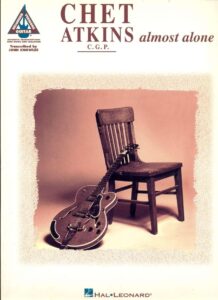
- Jazz Chord Voicings: He favored rich, often close-voiced chords higher up the neck, utilizing extensions (9ths, 11ths, 13ths) and alterations (b9, #9, #11, b13). He might play a complex chord like Gmaj9#11 where a simpler G major might have sufficed.
- Chord Substitutions: Frequent use of tritone substitutions (e.g., replacing a V7 chord with the dominant 7th chord a tritone away), secondary dominants (V7 of V, V7 of IV, etc.), and diminished chords for passing tension.
- Modal Interchange: Borrowing chords from parallel modes (e.g., using a iv minor chord from the parallel minor key in a major key progression).
- Intricate Progressions: While capable of playing simple I-IV-V, his own compositions and arrangements often featured sophisticated cycles and modulations. “Windy and Warm” is a masterclass in deceptive cadences and elegant harmonic movement (D – Dmaj7 – D7 – Gmaj7 – G6 – A7 – D).
- Bass Line Movement: His thumb wasn’t just playing roots. It created walking bass lines with scalar and chromatic passing notes, implying more complex harmony even under simpler chords.
- Counterpoint: Independent bass and melody lines often created implied harmonies beyond the chords explicitly being fingered.

Influences: The Roots of the Tree
- Merle Travis: The foundational influence. Travis’s thumb-and-fingers technique was the springboard for Chet’s entire style.
- Django Reinhardt: Atkins deeply admired Django’s melodic brilliance, improvisational fire, and gypsy jazz harmonies. He recorded several Django tunes.
- Les Paul: Both a friend and an influence in terms of guitar innovation, multi-tracking experiments (though Atkins used it more sparingly), and popularizing the electric guitar as a lead instrument.
- George Barnes: A highly sophisticated swing and jazz guitarist whose chordal approach and clean articulation resonated with Atkins. They recorded the excellent duo album “Chester & Lester.”
- Jerry Reed: While Atkins produced and championed Reed, Reed’s own incredible, funky fingerstyle and compositional genius (“Jerry’s Breakdown,” “The Claw”) significantly influenced Atkins in return, leading to dynamic collaborations.
- Classical Guitarists: The pursuit of clean tone, articulation, and repertoire.
- Pop Standards & Songwriters: His vast repertoire drew from the Great American Songbook (Gershwin, Porter, Kern) and contemporary pop songwriters.

Legacy: The Enduring Ripple Effect
Chet Atkins’ legacy is immeasurable and multifaceted:
- Guitar Godfather: He is arguably the most influential fingerstyle guitarist of all time. Virtually every fingerstyle player since owes him a debt. Tommy Emmanuel, Mark Knopfler, George Harrison, Eric Johnson, Steve Wariner, and countless others cite him as a primary inspiration.
- Architect of the Nashville Sound: He transformed country music from a regional, fiddle-and-steel dominated genre into a polished, internationally popular sound that dominated the charts for decades. This laid the groundwork for modern country production.
- Genre Transcendence: Atkins proved that a country guitarist could play sophisticated jazz, classical, and pop with equal authority and respect. He broke down musical barriers.
- The Producer’s Producer: His calm, encouraging, and musically insightful production style shaped the careers of dozens of major artists and defined the sound of an era. His ear for talent was legendary.
- Technical Innovator: His unique thumb-and-fingers technique, use of harmonics, and melodic bass lines expanded the vocabulary of the guitar.
- Guitar Design: His input led to the creation of iconic guitar models like the Gretsch Country Gentleman and Tennessean, used by George Harrison and Neil Young.
- Ambassador: He brought instrumental guitar music to a vast mainstream audience through his accessible yet sophisticated recordings and television appearances.
- Awards & Honors: 14 Grammy Awards (plus a Lifetime Achievement Award), 9 CMA Instrumentalist of the Year awards, inductions into the Country Music Hall of Fame, Rock and Roll Hall of Fame (as a sideman), Musicians Hall of Fame, and the Grammy Hall of Fame. The “C.G.P.” (Certified Guitar Player) designation he bestowed remains one of music’s highest honors.

Major Works: Albums as Landmarks
Chet Atkins recorded over 100 albums. Here are some pivotal ones:

- Chet Atkins’ Gallopin’ Guitar (1953): Early showcase of his signature style.
- Stringin’ Along with Chet Atkins (1953): Included the influential “Country Gentleman.”
- Chet Atkins in Three Dimensions (1955): Early exploration of stereo recording and diverse styles.
- Finger Style Guitar (1956): A definitive statement of his technique.
- Chet Atkins at Home (1957): Hugely popular, featuring “Mr. Sandman” and establishing his mainstream appeal.
- The Most Popular Guitar (1961): Showcasing his pop sensibilities.
- Teensville (1960): Adapting rock ‘n’ roll instrumentals to his style.
- Chet Atkins Picks on the Beatles (1966): Demonstrating his ability to interpret contemporary pop.
- Me and Jerry (1970) & Me and Chet (1972): Landmark collaborations with Jerry Reed.
- Chester & Lester (1976): Grammy-winning jazz collaboration with Les Paul.
- Reflections (1980): A mature, introspective album.
- Stay Tuned (1985): Won a Grammy, featured modern production.
- Neck and Neck (1990): Grammy-winning collaboration with Mark Knopfler.
- Read My Licks (1994): Featuring collaborations with Knopfler, Clapton, Welch, Ritenour, and others.
- The Day Finger Pickers Took Over the World (1997): Final album, with Tommy Emmanuel.
Filmography & TV: Bringing Guitar to the Masses
While not a movie star, Atkins was a frequent television presence:
- Regular performer on ABC’s The Eddy Arnold Show (early 1950s).
- Long association with The Grand Ole Opry (member from 1950).
- Hosted the influential Chet Atkins Show on ABC (summer 1959).
- Hosted Music from the Land syndicated series (1960s).
- Regular guest on variety shows like The Tonight Show (with both Steve Allen and Johnny Carson), American Bandstand, Hee Haw, and Austin City Limits.
- Appeared in documentaries like The Guitar Players (1981) and Chet Atkins: A Life in Music (1990s).
- Brief cameo in the film Roadie (1980).
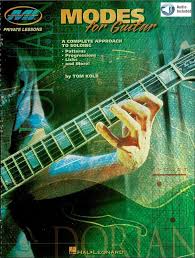
Discography Highlights (Beyond Key Albums):
His discography is vast, including numerous concept albums, collaborations, and thematic collections:
- Chet Atkins in Hollywood (1959)
- The Other Chet Atkins (1960)
- Down Home (1962)
- Guitar Country (1964)
- It’s a Guitar World (1967)
- Solid Gold ’69 (1969)
- Pickin’ My Way (1977)
- The First Nashville Guitar Quartet (1979)
- Work It Out With Chet Atkins (1983)
- Sails (1987)
- Sneakin’ Around (1992 – compilation of collaborations)
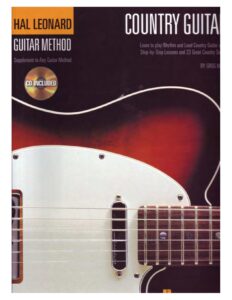
Most Known Compositions & Signature Performances:
- “Country Gentleman”: His signature tune, showcasing his style.
- “Mr. Sandman”: His massive 1955 hit instrumental version of the Chordettes’ vocal hit.
- “Yakety Axe”: His answer to Boots Randolph’s “Yakety Sax,” featuring his signature harmonic runs.
- “Windy and Warm”: A beautiful, harmonically rich composition popularized by John D. Loudermilk but forever associated with Chet.
- “Trambone”: A lively showcase of his thumb independence and melodic bass.
- “Gallopin’ on the Guitar”: Early hit with Hank Snow.
- “Boo Boo Stick Beat”: A fun, rhythmic novelty piece.
- “Jerry’s Breakdown”: Co-written with Jerry Reed, a fingerstyle tour-de-force.
- “Blue Angel”: A beautiful, lyrical ballad.
- “Recuerdos de la Alhambra” (arrangement): His classical showpiece, demonstrating tremolo technique.
- “Stars and Stripes Forever” (arrangement): A dazzling fingerstyle rendition of Sousa’s march.
- “Let It Be Me”: A definitive instrumental version of the Everly Brothers classic.
- “Vincent (Starry Starry Night)”: A poignant instrumental cover of Don McLean’s song.
The Enduring Gentleman
Chet Atkins’ impact extends far beyond awards or chart positions. He embodied a rare combination: unparalleled technical skill deployed with taste and humility, a deep reverence for diverse musical traditions, and an innovative spirit that reshaped an industry. He didn’t just play guitar; he redefined what the guitar could do, both as a solo instrument and as the backbone of a genre. He approached complex music with a deceptive simplicity, making the intricate sound effortless and accessible. His quiet demeanor masked a fierce musical intellect and an unwavering dedication to his craft. The sounds he coaxed from six strings – warm, clear, sophisticated, and deeply melodic – continue to inspire awe and joy in musicians and listeners alike. Chet Atkins wasn’t just “Mr. Guitar”; he was a true musical gentleman whose gentle touch left an indelible mark on the world’s sonic landscape. His legacy is the sound of elegance, innovation, and the boundless possibilities of the guitar.
Chet Atkins discography.
Chet Atkins‘ discography is large and diverse. Not only did he release principal studio albums as a solo artist, he was a prolific and much sought-after collaborator. He also played as a sideman on many more. His major collaborations were with Hank Snow, Arthur Fiedler and the Boston Pops Orchestra, The Country All-Stars, The Nashville String Band, Jerry Reed, Merle Travis, Doc Watson, Lenny Breau, Les Paul, Mark Knopfler, Suzy Bogguss, Floyd Cramer, Johnny Gimble, and Tommy Emmanuel. He frequently guested on a track or two with other friends. Several of his recordings won or were nominated for Grammy Awards.
His discography as a producer encompasses many albums and singles for a wide range of artists. Atkins produced records for Perry Como, Elvis Presley, Eddy Arnold, Don Gibson, Jim Reeves, Jerry Reed, Skeeter Davis, Connie Smith, Waylon Jennings, Ann-Margret and many others.
Browse in the Library:
Or browse in the categories menus & download the Library Catalog PDF:
